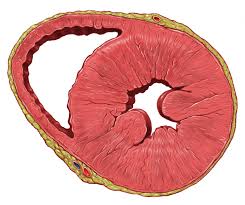Seminars in Dialysis . 2020 Mar;33(2):120-126. doi: 10.1111/sdi.12864. Epub 2020 Mar 11.
Irbaz Hameed 1 , Mario Gaudino 1 , Ajita Naik 1 , Mohamed Rahouma 1 , N Bryce Robinson 1 , Yongle Ruan 1 , Michelle Demetres 1 , Maurizio Bossola 2
As kidney function deteriorates, left ventricular hypertrophy (LVH) develops in more than 70% of patients and progresses with chronic renal sufficiency. Etiology for this LVH is related to traditional cardiovascular disease risk factors such as diabetes, hypertension superimposed on new risk factors associated with CKD such as uremia, volume overload, second hyperparathyroidism and chronic anemia,. Also dialysis associated risk factors such as intradialytic hypotension, chronic inflammation and protein calorie malnutrition play a significant role. LVH ( eccentric and concentric hypertrophy) is associated with increased mortality and is an independent determinant of survival and a predictor of sudden cardiac death in dialysis patients.
Hemodiafiltration( HDF) mode of dialysis uses diffusion and conductive clearance to remove uremic solutes. It achieves better clearance of small/medium sized molecules without causing significant hypotension during dialysis.. However it is not clear if hemodiafiltration is better when compared to regular intermittent hemodialysis in improving LVH, (defined as reduction of the left ventricular mass index (LVMi), and increase in ejection fraction (EF))
In this systematic review and/meta-analysis, the effect of HD and HDF on left ventricular mass index and ejection fraction was compared in ESRD patients. Primary outcome was the mean difference between pre and post procedural LVMi. Secondary outcome was the mean difference in EF. Seven studies with a total of 845 patients were included. In this analysis, there was no significant effects on changes in LVMi and EF were observed with HDF compared with conventional HD.


